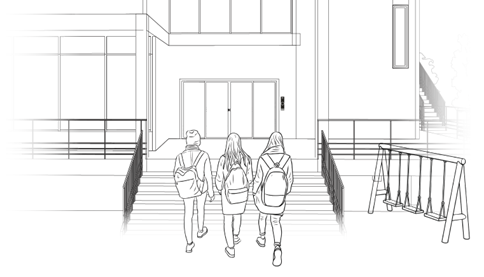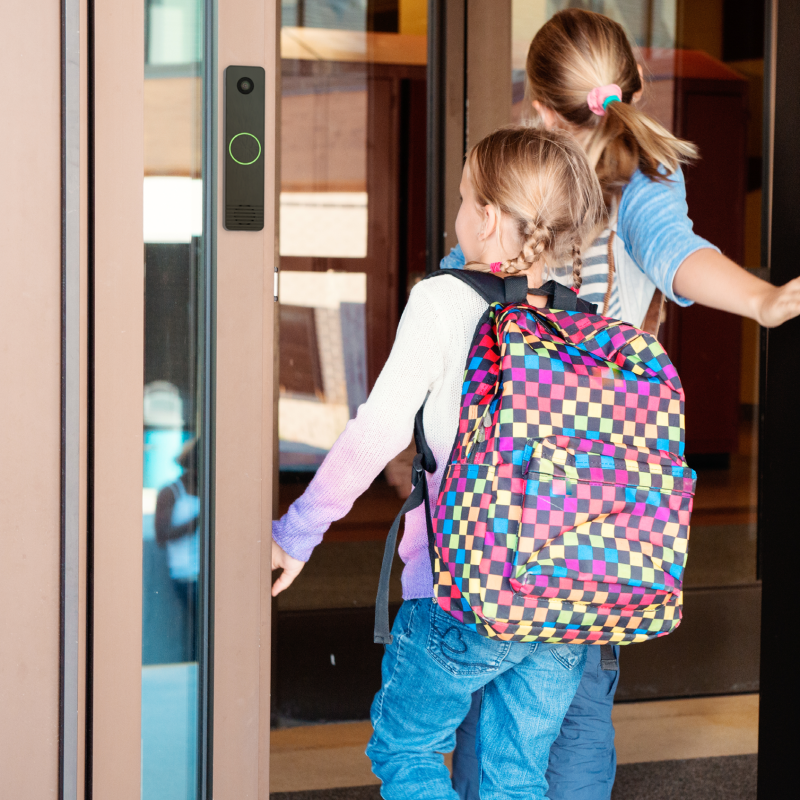How School Intercom Systems Create a Safer Learning Experience in K-12 Schools
School safety depends on more than cameras and card readers. This article outlines how audio-enabled school intercom systems provide the missing link in K-12 security strategies, enabling real-time two-way communication that supports safer access management and creates a more secure environment for students and staff.

Today’s K-12 schools face a wide range of risks and emergencies such as active threats, violent crimes, and trespassing. According to the Report on Indicators of School Crime and Safety: 2023 from the Institute of Education Sciences, there were 50 active shooter incidents in U.S. elementary and secondary schools between 2000 and 2022.
In 2022 alone, four active shooter incidents resulted in 52 casualties — the second highest number in any year since 2000, following 2018 (81 casualties).
While there is no way to predict or prevent all school security incidents, there are best practices that schools can adopt to increase awareness, preparedness, and even mitigate the impact of such events.
These protective measures include policies, personnel, and security technologies, such as a school intercom system — that help strengthen the school’s response capabilities.
How to Secure School Entrances
Providing a safe environment is essential for student learning. According to a report from the Readiness and Emergency Management for Schools, “a safe school environment is crucial to the healthy academic and social development of students.” It also impacts staff retention, parent satisfaction, and, most importantly, academic achievement. When students feel safe, they are better able to focus, leading to better performance in the classroom.
In fact, research shows that students’ perception of school safety can have an even greater impact on success than the safety measures themselves.
A wide range of security solutions can be used to create a safe learning environment, whether for a single school building or a large district with multiple campuses.
Security Challenges at the School Door
Stationing security officers at entrances is one approach — but it can be expensive. Schools often turn to other tools like ID cards, video surveillance, access control software, and databases. Yet each of these has limitations.
Access control may determine who can open a door, but once open, anyone can enter. Surveillance cameras may show who’s outside, but the view can be limited, and people can obscure their identity. Even trained guards are susceptible to distractions or being overwhelmed. On their own, these systems don’t fully secure a school.
Why the School Intercom System Matters

Door entries serve as the first line of defence in protecting a school, its faculty, students, and visitors. That’s because schools face a wide range of risks, particularly at their entrances. Hardening a school entrance is critical, but not always easy, as often criminals enter a school the same way most of us do — through the front door.
Door entry points in schools also can be noisy environments with street traffic, truck drivers attempting to enter the property, and other background noise.
This is where an integrated school intercom system adds a critical layer of security.
When a visitor or vendor pushes the intercom button, both audio and video can be used to verify their identity and intent. A two-way conversation allows a receptionist or security officer to assess whether entry should be granted.
Intercom units can be linked to the main system at secondary points, such as delivery entrances or administrative offices, creating a centralized, manageable network.
When integrated with access control, the school intercom system enables a security officer to:
- Answer and place calls
- Manage call queues
- View linked video
- Identify caller's location on a map
This gives staff more context and better control of who enters the building — and why.
Seeing, Hearing, and Understanding
All students need a safe environment to learn and that means the ability for security teams to control access to all doors and entry parts. And part of controlling access is the ability to see and hear the individual who wants it.
Access control allows a team to safeguard a facility and allow entry, but it doesn’t provide real-time information. Video surveillance allows security teams to see and detect, but used alone, it has its limits with providing a complete view of a situation, as well.
Audio via a school intercom system brings all elements together – it adds interactivity, it provides more information, and it allows people to hear, be heard and be understood. Ultimately it also allows security teams to effectively control entry to the school and creates a safe and secure environment.
